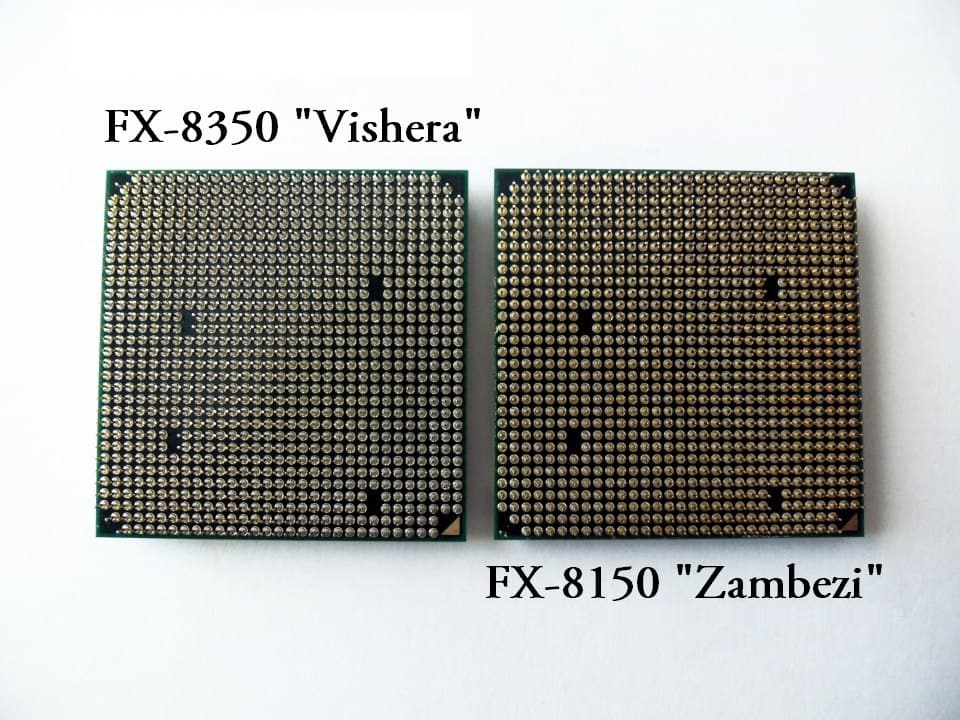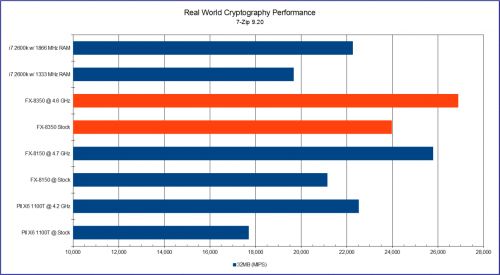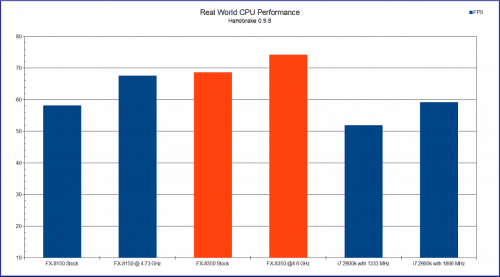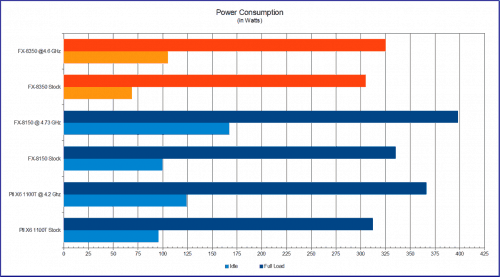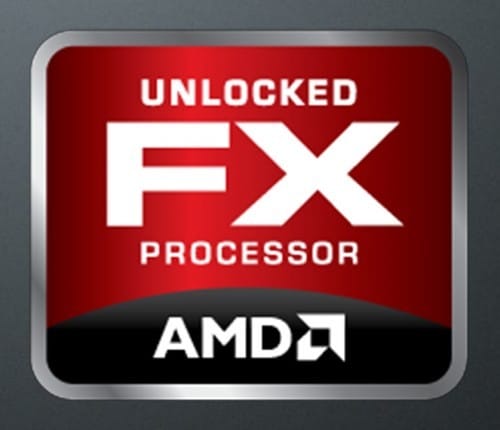Real World CPU Performance (7-zip)
This will be a real work example of the cryptography testing that we did earlier on. The 7-zip benchmark is a simple and straight forward test of how well your CPU/memory combo can handle compression and decompression. I run this test 3 times and use the best results.
The results here can be enhanced with faster memory, more threads, and/or more CPU clock speed. The 8 core/8 threaded FX-8350 with 1866 MHz RAM comes out ahead of all the competition. Once again overclocking shows improvement for all AMD processors with the Vishera coming out on top minus 100 MHz of speed given up to the Zambezi chip. The Intel i7 2600k also has a strong showing, but 7-zip continues to favor AMD.
Real World CPU Performance (Handbrake 0.9.8)
Now lets look at raw core performance with a widely used program known to favor clock speed and core count over anything else. Memory can affect the performance results, so I will include both clock rates for the i7 2600k. This test is done with a 720p H.264 video that is 5 minutes in length being converted to fit an iPhone4 in format and size.
The FX-8350 has no trouble cruising into the lead at stock speed. Even with overclocking the Zambezi FX-8150 still falls short in FPS during converting. Overclocking the FX-8350 shows there is performance to gain with higher clock speeds.
Power Consumption
Now for the final piece to the puzzle. How much power do you need to get the performance shown by the FX-8350? Ideally we would like to see a drop in power consumption with every newer generation/revision, but lets see what the numbers show.
This is the stand out improvement we were hoping for. With 20 watts less being used at idle and 30 watts less at full load, the new Vishera gets more efficient. There is obvious power consumption increase when overclocking (disabled power saving features) comes into play, but nothing unreasonable like the near 400 watt system power use by the overclocked FX-8150. There is a drop of almost 75 watts for these new Vishera processors when overclocked.
Final Thoughts
This is one of those occasions where AMD has done their job well, but we can’t really celebrate quite yet. The new flagship AMD FX-8350 “Vishera” definitively takes the title of champion amongst AMD processors. The Phenom II 1100T 6-core CPU can’t even hold onto the single-thread advantage it once had. While there is still a clear need for improvement in single-thread performance, it can’t be viewed as a weakness of the new architecture.
In every category, the FX-8350 either walks away victoriously, or refuses to give up ground to any other AMD processor. Performance tends to now go back and forth with the higher cost Intel i7 2600k, which is good for AMD, but arguably, they are still one generation too late. Especially when Ivy Bridge is here and thriving in the marketplace. It’s an overall impressive improvement for a still very new architecture for AMD, but it’s still so far behind from taking the overall performance lead.
Instead of fighting a battle it can’t win with performance, AMD has smartly decided to exploit a weakness of Intel parts which is the price tag. The FX-8350 will be set at $199 MSRP which positions against the Intel i5 3550 at $210 and i5 3570K at $230. Even with the 5% to 15% performance advantage that Ivy Bridge has over Sandy Bridge, the FX-8350 can leverage 8 cores in multi-threaded tests against the four physical cores of the Core i5 series Ivy Bridge processors. This is a smart move by AMD, but I hope this is not at the cost of further downsizing of the company itself. Which is a story for another day.
The bottom line is AMD FX-8350 “Vishera” is 5% to 15% faster than the FX-8150 “Zambezi” using 9% to 31% less energy at only a $15 premium over current FX processors. Additional system performance is on the horizon with new graphics drivers and AMD SATA drivers being finalized right now. I also look forward to seeing the more mature memory controller using AMD AMP! to squeak out a little more performance in memory intensive tasks.
This is a release AMD can brag about, but the company still needs to keep focus on future improvements to keep the momentum going.
Pros
- Improved Performance Across the Board
- Faster Single Thread Performance than previous generations
- Lower Power Consumption than previous generations
- Compatible with all AM3+ motherboards
- Aggressively Priced ($199 for top end FX-8350)
Cons
- Lower Performance Compared to 8 thread Intel CPUs
- Increased RAM Clock Speed does Nothing
Overall Score: 9.0 / 10.0

Help Us Improve Our Reviews By Leaving a Comment Below!

